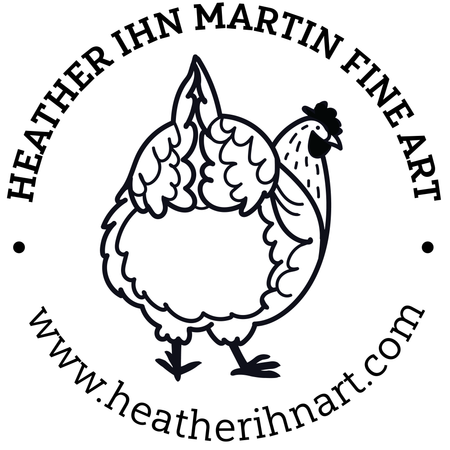Have you ever spent hours on a painting, hunched over with crazed eyes, face inches away from the canvas only to step back and realize that it’s over-rendered, stiff and lifeless? ME TOO.

The good news is that there are ways to learn to let go and loosen up, no matter how rigid, cold, controlling or uptight you tend to be. (KIDDING of course...)
Set A Time Limit
One of the quickest ways to loosen up is to set a time limit. No, I’m not talking about trimming your 8 hour session down to 7.5 hours. This limit should have you sweating and feel close to impossible. Let's say 30 mins- 1.5 hours depending on size and skill level.
Some of my best work has been under the tough time crunches due to quick changing light or moving subjects, and I believe it's because I can't overthink it if I tried!

When working under a tight time limit, you’ll need to take a more strategic approach. Before starting, really think about what is most important about your subject. Is it the lighting? The gesture of a figure? The color of an object? Visualize your process, and lay in the important pieces of the puzzle early on. Over time, you’ll learn to let go or simplify the things that matter less.
Bigger Brushes
Let's also set those little itty bitty detail brushes on fire- *ehem* I mean, aside, and bring in the BIG BEASTS. Use the largest brushes as possible at least 90% of the piece. Extra credit if you limit it to a single brush. My personal favorite is to use a 1” flat since you are able to get quite a variety of brushstroke sizes by using the different edges.
I never said this would be EASY. This particular tip has most students groaning in agony, but they’re usually excited once they see the results. Why? Because these large brushes force simplification.
Larger Canvases
One major issue I see is that artists are often using tiny little brushes on these microscopic canvases. Not only should your brushes be larger, but try playing with bigger surfaces (and even bigger brushes to compensate).
You don’t need to permanently make the switch to larger canvases, but I'm just asking that you give it a shot. Think of how much more energy you can put into your work! Warning: it’s so fun that you might find it hard to go back to those smaller canvases.

Stand Up and Stand Back
Speaking of which, stand up if you’re able. I rarely sit to paint unless I want a specific point of view. Standing allows one to almost dance with their painting, and you're able to step forward and back effortlessly.
Being able to step back is crucial, as it simplifies things (seeing any trends here?) and allows you to check your work.
Have some long handle brushes? Try holding them farther down the handle with a straight arm and a strong stance. This let’s you get away from your painting, yet maintain just enough strength and control.

Add and Subtract
Oh no! So you’ve fallen into the rabbit hole of refining and adding too much detail, and things are starting to look stale. Don’t worry, you can still revive it! The lesson here is to be okay with removing detail. Whether it’s taking a palette knife and ruthlessly scraping off all that unnecessary paint, or going over your gouache painting with a wet brush, the goal is to subtract things down and add detail again where it matters.
Think of it like an ocean tide. You add details in, and then you pull some away, and repeat. It feels less painful to know that it's just part of the process and not just erasing hours of your life.
So there you have it. Hopefully these tips will help you be on your merry way to loosening up. Remember, everything requires practice. Don’t give up if in the first couple of tries it just doesn’t look right. Keep going, I believe in you! Have other good tips? Leave them in the comments below!


